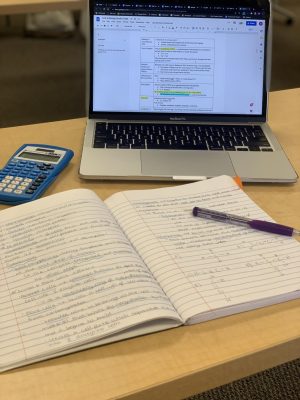Zoom has emerged as the new bubble we live in since the breakout of the COVID-19, and today, a significant number of Americans rely on Zoom as their office, classroom, playground, gym or even favorite bar or coffee shop. Essentially, Zoom has become the one stop place where we conduct most of our daily interactions with others, and we have learned to succumb to staring at the screen for hours, trying to replicate what we used to take for granted: the experience of in-person interaction.
Now that Harvard Westlake’s (HW) fall semester is well underway, in addition to our daily academic classes on Zoom, virtually all other campus activities, such as club meetings, grade level gatherings, admission tours, and office hour visits are now all being conducted on Zoom.
Aside from having to attend five or more hours of academic classes on Zoom, students also have to spend a few additional hours doing homework on their computer. Like many students across America, Helena Augsberger ’25 now attends all of her daily school classes as well as after school dance classes via Zoom. “By end of the day, my eyes are tired from focusing on a screen for extended periods of time, and often, I experience headaches and even migraines,” Augsberger said. Another student, Etan Kiang ’25 also shares a similar experience. “Since we have begun online school via zoom, my eyes hurt by the end of the day, so I have to wear blue-light glasses to minimize eye exposure to blue light,” Kiang said. “Zoom glasses are now a part of my life even though I didn’t have eye problems before.”
Since the pandemic, a new buzzword that has been coming up frequently on Google search is the term “Zoom fatigue” which is described as “the tiredness, worry, or burnout associated with overusing virtual platforms of communication,” Carolyn Wolf said, according to Psychology Today. However, since most of these symptoms have links to how our brain processes information, experts suggest there are some simple ways that can help alleviate Zoom fatigue.
One method to overcome Zoom fatigue is to avoid multitasking by closing all tabs that might cause distraction. “The next time you’re on a video chat, close any tabs or programs that might distract you (e.g. your inbox or Slack), put your phone away, and stay present,” Liz Fosslien and Molly Duffy said, according to Harvard Business Review. Since video calls on Zoom make it easier than ever to text or check social media pages during the Zoom session, multitasking puts more burden on one’s brain to process all the information, thus leading to feeling more tired and exhausted at the end of the session.
Another way to reduce Zoom fatigue is to take small breaks from the screen by turning off your video. Fosslien and Duffy point out that “on a video call, the only way to show we’re paying attention is to look at the camera…and having to engage in a constant gaze makes us uncomfortable – and tired.” Therefore, turning off your video for a short period can provide an opportunity for both your mind and eyes to rest and it will also improve overall focus and concentration on the task at hand.
Paul Chenier, a history teacher at HW, suggests similar strategies when it comes to helping students to reduce Zoom fatigue. “In addition to the actual fatigue, I know that there is fatigue about being observed,” Chenier said. “It can be tiring to feel ‘on the spot,’ so one way to cope is to simply turn off the camera and let students know that they are allowed to work away from screens.” He also mentioned that he tries to provide assignments that can be printed out so students can stay away from screen as well.
Reducing overall screen time with built-in breaks also have shown to improve Zoom fatigue. “It can be tempting to schedule back-to-back meetings to get through the day quicker, but doing so could cause Zoom fatigue to appear earlier than expected,” said Alex Sixt, according to Entrepreneur. Sixt also suggests, “To combat the Zoom fatigue that comes with a busy virtual meeting schedule, the cure is as simple as scheduling breaks during the day.”
The new daily schedule at HW reflects the same intent to help students during online learning. In HW’s Return to School Plans and Guidelines published in August, HW has introduced a new daily schedule with 10 minute breaks (instead of five in the past) to allow for screen breaks for students and teachers. However, in order to maximize the benefits of breaks, Sixt points out that “effective breaks should include moving around to get your blood flowing and introduce a change of scenery… such as stepping outside for a few minutes or simply looking out the window can do wonders with preventing Zoom fatigue.”
As we cross our fingers to get back to some level of normalcy in the near future, we should continue to take precautions and apply these practical solutions while we resort to Zoom to live our lives.











